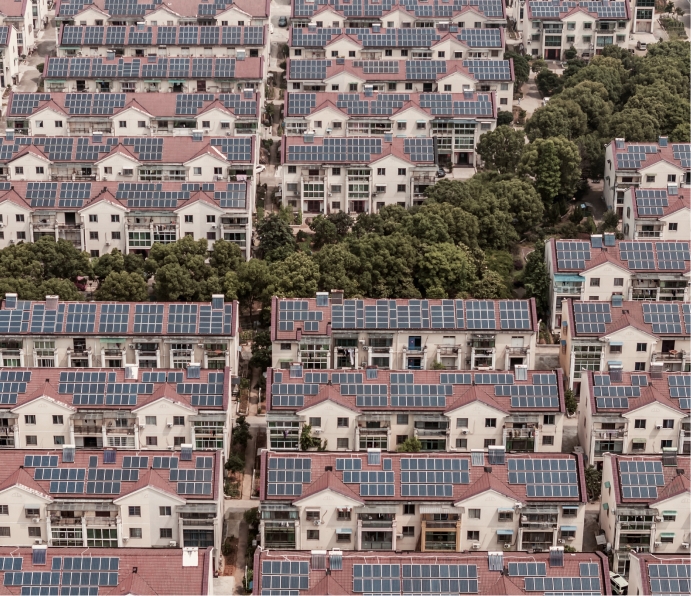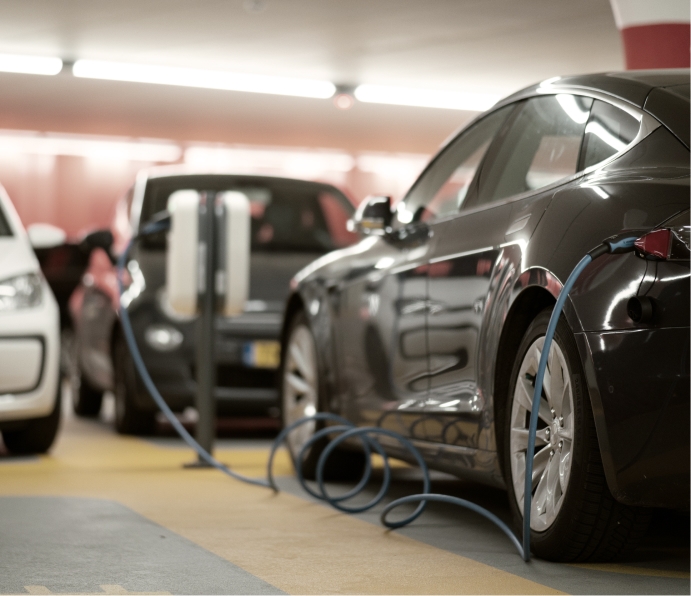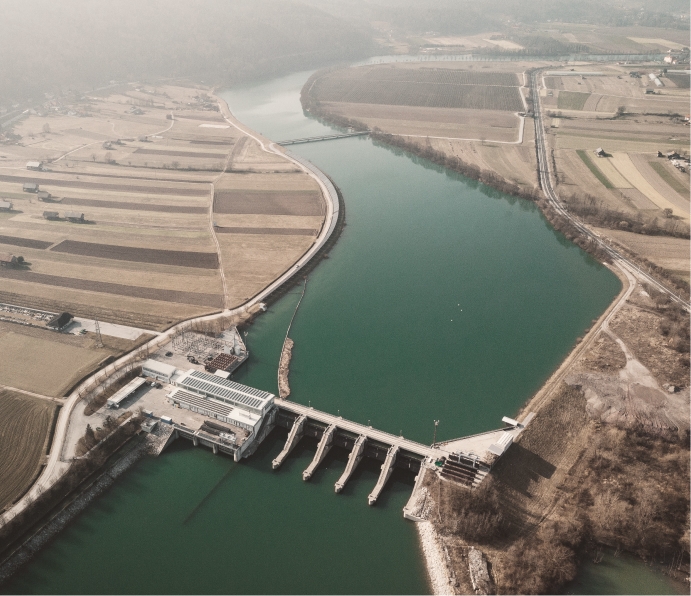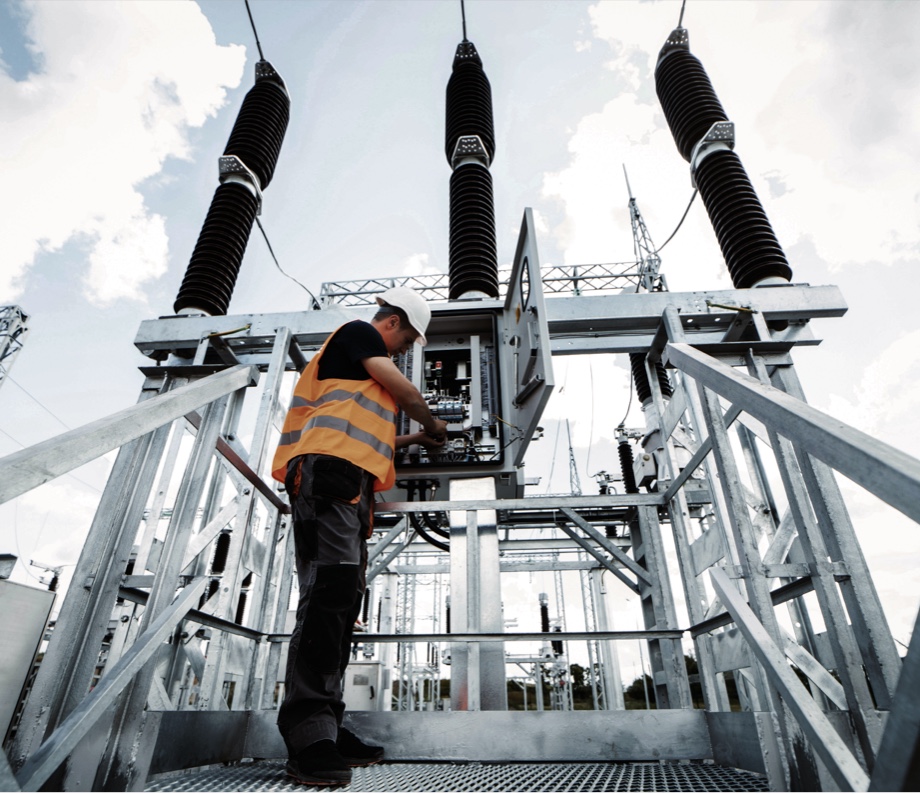Charting the Course to a Sustainable Future for the Utility Sector
As the world moves to meet its green-energy goals, the utility sector is poised for a sweeping transformation that will help it lead the way. A new study explores the urgency and complexity of this transition, and the challenges and opportunities that await.
Download the studyForeword Architects of a
Sustainable World
The transition to net zero requires a significant scale-up of clean power, leveraging active participation from various stakeholders, including governments, financial institutions, civil society, and corporations. At the forefront of this journey will be utilities which are not just participants in the drive toward net zero but central architects of this new, sustainable world. As builders of large-scale infrastructure projects, utilities are instrumental in generating and moving power across vast distances and transitioning from traditional energy sources to renewable ones. They are also at the helm of transforming other critical systems, such as water management, to align with emerging sustainability goals.
The energy transition presents profound implications for the utility sector, necessitating fundamental changes in their project development, customer engagement, regulatory frameworks, and operational methodologies. BloombergNEF’s research underscores the complexities of this shift, noting the need to triple renewable energy capacity by 2030 as well as support the widespread electrification of transport, heating, and industry.

The Future of Utilities study, a collaboration between TAQA and Bloomberg Media with insights from BloombergNEF, offers an insightful glimpse into an industry at a pivotal juncture. Almost half of the sector’s professionals are advocating for a broad-based transformation toward sustainability, according to the study. The report contains some surprising findings, including that a mere 5% of utility respondents perceive current regulations, which critically shape utilities’ operations and behavior, as a barrier. This suggests a sector that might be underestimating the need for regulatory reform.
Elsewhere, the study reveals doubts over whether 2030 carbon reduction targets can be achieved, and the challenges associated with integrating higher penetrations of renewable energy.
This is why the study is an important read. It shows how utilities, as key participants in the transition, are thinking about the global push toward sustainable energy. The insights it provides are valuable for understanding the complex dynamics and challenges these vital entities face in this era of transformation.
Key Findings
Drawing on market trends and insights from industry leaders, the Future of Utilities study provides a guide for business leaders and policy makers to explore the rapidly evolving energy landscape, and understand what utility companies need to do to adapt and thrive as they move toward a sustainable future.
1. Current trajectory
Confidence in utilities achieving 2030 emission reduction targets is low.
Only 44% of respondents have confidence in reaching their 2030 emission reduction targets.
2. Barriers to innovation
Innovation is limited most by poor collaboration and lack of awareness.
Poor collaboration with tech providers is seen as the largest barrier to change.
3. Top net zero enablers
Customer-centric models are key to enabling net zero goals.
Respondents see consumer empowerment as vital for the success of utilities in meeting 2030 targets.
4. Top net zero threats
Integrating renewable energy is widely considered the biggest threat.
The complexity of integrating renewables into the energy infrastructure is a serious potential roadblock to net zero.
The Need forFast Action on Carbon-Reduction Targets
The status quo won’t cut it. That much is clear. And the utility sector has not been standing still. While practices and perceptions vary among regions, four out of five respondents surveyed in the Future of Utilities study said that their companies are actively pursuing a more sustainable energy future, with respondents even in the most skeptical region, the Middle East, acknowledging a move toward net zero.
What’s more, nearly all global utility leaders agreed that a period of immense change is coming; the question is whether it will happen fast enough. Overall, respondents reported a 44% confidence level that they would reach their domestic carbon reduction targets by 2030.
The enormous challenge of achieving those targets was illuminated by BloombergNEF’s Energy Transition Investment Trends report, which found that the record $1.1 trillion investment in the low-carbon energy transition in 2022 fell far short of the $4.55 trillion in annual investment needed to keep on track for global net zero. By the 2040s, the report found, this requirement will jump to $7.78 trillion annually, with electrified transport, grids and renewable energy as primary investment areas.


In the Future of Utilities study, respondents expressed greater confidence in the sector’s ability to meet 2050 goals. But their short-term pessimism underscores the need for utility companies to be more proactive now—by pursuing more robust policies, collaborating more actively with governments and technology companies, and connecting more directly with consumers, especially as the energy industry increasingly shifts toward consumer empowerment.
Confidence in Reaching Domestic Carbon Reduction Targets
- 2030 domestic targets
- 2050 domestic targets
Utilities FaceVaried and Unexpected Barriers to Innovation
In many sectors, upfront costs and government regulation are often cited as barriers to progress. But in the utility sector, those two factors are not widely regarded as primary barriers to change. In their survey responses, most leaders instead cited poor partnerships with technology providers and low awareness of the latest alternatives as the largest impediments to innovation.
Here, regional differences emerged. In Japan, for instance, respondents were more likely to rank risk aversion and organizational inertia as the biggest barriers, while respondents in India pointed to the problem of inadequate internal expertise. South Africa was an outlier, as upfront costs were seen as one of the biggest issues, while utility leaders in Germany and the Middle East were most in line with the sentiments of total respondents.
Top Barriers to Higher Innovation Investment by Country
Successful Strategies for Utilities to Achieve Energy Transition Goals
In the brave new world of renewables, customers have greater power. No longer passive recipients of utility services, many have become active participants in energy generation, with a growing number utilizing decentralized technologies like rooftop solar panels, which help power green-energy alternatives like heat pumps and electric cars.

This accelerating shift toward power decentralization is detailed in BloombergNEF’s Energy Transition Investment Trends report, which notes a surge in investments across small-scale solar and behind-the-meter battery storage.
According to the report, demand-side investments in energy transition technologies, which totaled $561 billion in 2022, now surpass supply-side investments.
While these trends, coupled with rising energy prices, pose a challenge to traditional utility revenue models, they also represent an opportunity to build stronger and more direct relationships with consumers.
According to the findings in the Future of Utilities study, this approach isn’t just environmentally friendly; it’s also realistic. In fact, one in four respondents described building customer relationships as an “extremely feasible” solution, compared to just one in 10 regarding government relationships.
% of Respondents - Extremely Feasible Enabler of Net Zero
Rather than resist the shifting balance of power, the report suggests that utilities should embrace it and prepare for a future where individual ownership of solar panels, behind-the-meter battery storage, and electric vehicles will challenge traditional utility models.
Culturally, that means becoming more consumer-centric. Technologically, it means building infrastructure that is more flexible and responsive to today’s changing energy demands.
Top Threats to Utilities Achieving Net Zero
The expertise exists. So do good intentions. But the path to a sustainable energy future will not be easy. Any number of obstacles could get in the way.

In the Future of Utilities study, 41% of respondents cited supply chain disruptions as the top threat to achieving net zero, with the challenge of capital access close behind at 37%. The risk of geopolitical upheaval and weather issues ranked far behind, at 16% and 15%, respectively. But of all the potential roadblocks, none loomed larger in the survey than the complexity of integrating renewables: Half of respondents described the infrastructure challenge as a top-five threat.
Government regulation, on the other hand, was seen in a generally positive light, potentially offering a range of benefits including investment incentives, consumer protections, environmental stewardship, and resource management.
Notably, the greatest potential upside for regulation was seen as its power to facilitate renewable integration. While government agencies might help with that, the report emphasizes that the bulk of the responsibility will fall upon utilities, which will need to spearhead innovations in grid technology to seamlessly incorporate an ever-advancing wave of green-energy alternatives.
Already, immense resources are being devoted to this cause, and those investments show no sign of slowing.
Consider the findings from BloombergNEF’s New Energy Outlook 2022 report, which projects a $21 trillion investment by 2050 to expand and refurbish the global electricity system. Additionally, BloombergNEF’s Trends 2023 report expects electrified transport, renewable energy and grids to dominate investments between 2023 and 2030, comprising 72% of annual combined share of energy transition investments.
That trend is set to escalate in the coming decades, with an estimated annual investment of $6.88 trillion in the 2030s, and $7.87 trillion annually by the 2040s.

A Clear Mandate for the Future
The utilities sector is a pivotal player in the global push toward a cleaner energy future, and it is poised for a dramatic transition. With 93% of survey respondents calling for either comprehensive or reasonable changes, the mandate is clear.
To achieve net zero, utility leaders must be visionary, adaptable and dedicated to steering their organizations through a period of dramatic change that will redefine the sector and transform the energy world. By marshaling their energy and expertise, utilities can meet the challenges ahead and prove themselves up to the task.
As the Future of Utilities study makes clear, embracing a net-zero future means nurturing and embracing collaborative initiatives across sectors and across enterprises, ranging from government agencies to private technology companies. It will involve a shift toward more consumer-centric strategies, and the reconfiguration of infrastructure to be more flexible and responsive to fast-evolving energy needs.
This sweeping transformation promises to be as complex as it is crucial. It is hoped that utility leaders will champion the collaborative efforts outlined by the report, recognizing them as fundamental to navigating the path toward a sustainable net-zero future.


